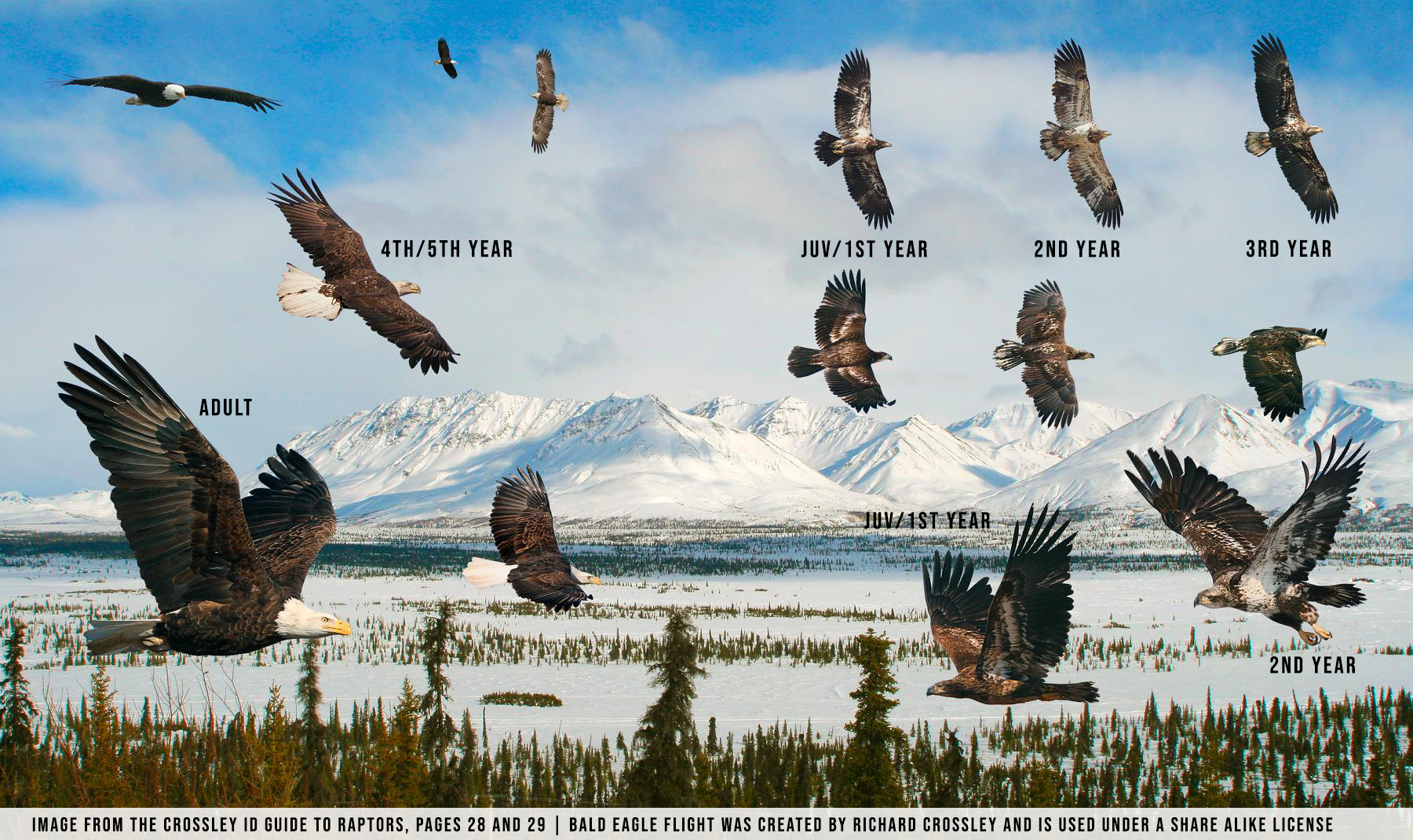It’s a bald eagle-palooza on the Mississippi Flyway! While bald eagles are well-equipped to deal with snow and cold, they can’t fish when the water is covered with a thick layer of ice. These eagles – and many other species – are following the ice line north. As soon as the ice opens up, breeding adults will swiftly wing their way back to their territories. Non-breeders, especially immature juvenile and subadult birds, will probably follow a little later. They don’t have mates and territories to get back to, which means that they can take their time!
This video shows a lone immature eagle followed by a mixed age group of perhaps two or three adults, two juveniles, and three subadults. One of the juveniles appears to be playing with vegetation, although there could be something edible caught in the rushes: perhaps a piece of fish skin, a tiny bit of waterfowl, or the remains of a frog. But if there is anything to eat, it isn’t interesting enough to attract the attention of the other eagles.
How old are these eagles?
There are a number of good aging guides available, but I’m going to quote the Crossley Guide to Raptor ID:
- First year or juvenile eagles are brownish overall with dark eyes and bill, variable amounts of white on the underwing coverts and the undersides of the secondaries, and white wing pits. By spring, many first year eagles develop a pale or tawny belly, whereas second and some third years are typically whiteish. Crossley doesn’t put it this way, but they often appear larger and shaggier than their older counterparts due to their longer flight feathers. The eagle that is playing with vegetation looks like a juvenile to me.
- Second-year eagles are quite variable in plumage. Most develop a white belly (the ‘red-tailed hawk’ phase) and back. The eyes are still mostly dark but can become paler in some birds, and the bill will be a dusky greyish color with hints of yellow at the base.
- Three-year eagles are similar to second-years, but the head and tail are typically whiter and the eyes and bill show more yellow. At least one eagle in this video fits that description. Two more could be three years old, but I suspect that they are four given their white heads. If we had them in hand, we could verify their age with the molt sequence of their primary and secondary feathers.
- Four-year eagles are variable in appearance and can appear adult-like overall with a blackish-brown body and a white head and tail. These eagles will generally show a few apparent signs of immaturity, including dark flecking on the head or tail, or a little white mottling on the underside. But other four-year-olds retain a fair number of dark feathers, which gives them osprey-like eye stripes. Their eyes are yellow and their bills are yellow, but some still retain a dusky tip.
Is the eagle in the first part of the video turning two or three? I finally decided that two was more likely given the eye and bill color, although the dark belly patch seems to indicate a one-year old molting into its second year. Again, if we had them in hand, we could verify its age with the molt sequence of its primary and secondary feathers.
Why is aging by plumage so tough? While eagles have (relatively) distinct plumages, they come in a wide variety of patterns and colors and individuals molt at slightly different rates. Classifying immature birds between two and five years old can be particularly challenging since plumages overlap somewhat between these ages. This video and the image below are a great way to practice your eagle aging skills!

Bald Eagle Flight From the Crossley Guide to Raptors.
Crossley image on wikipedia: https://commons.wikimedia.org/wiki/File:Bald_Eagle_flight_From_The_Crossley_ID_Guide_Raptors.jpg
 The Raptor Resource Project
The Raptor Resource Project The Raptor Resource Project
The Raptor Resource Project